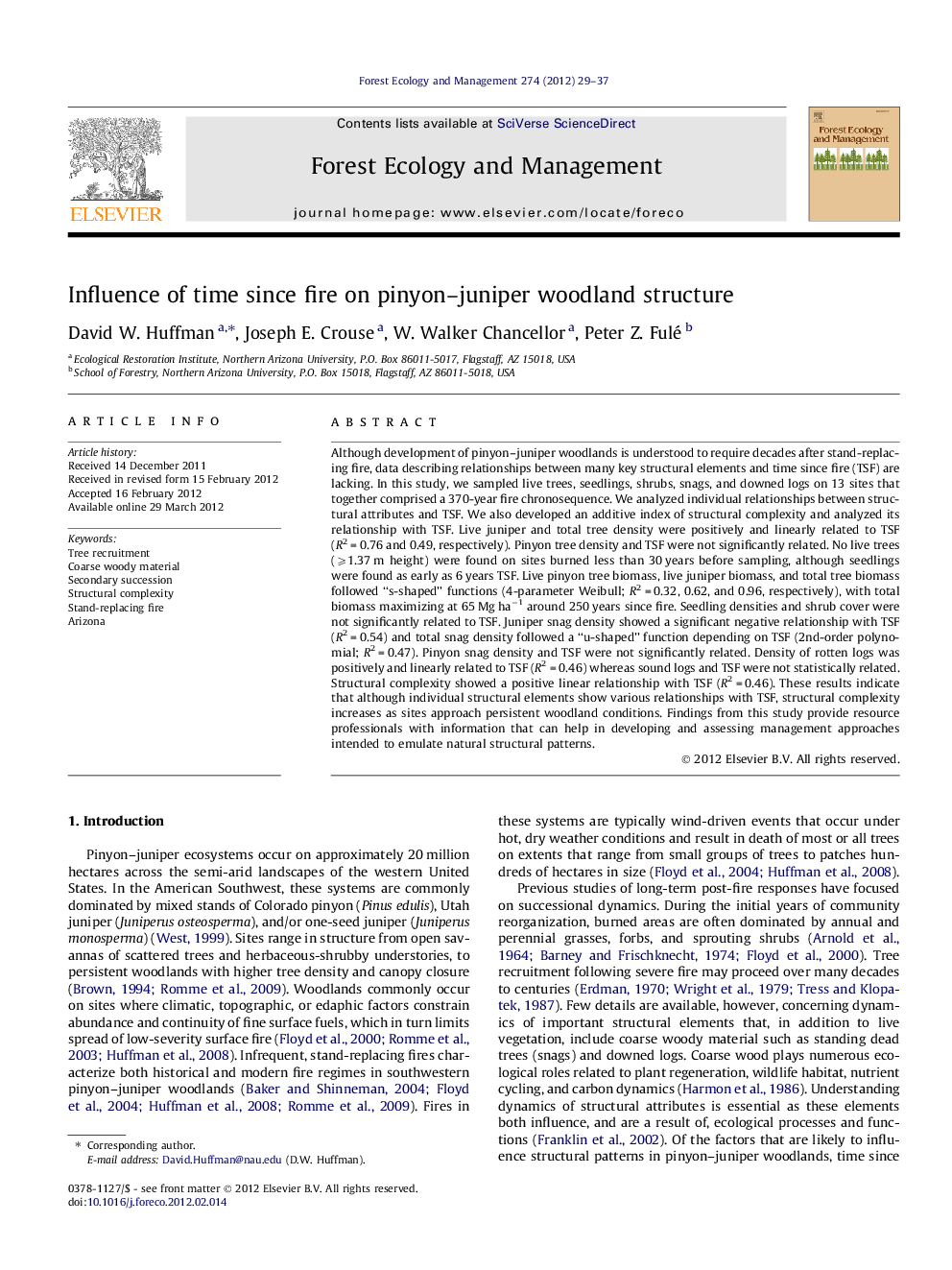| کد مقاله | کد نشریه | سال انتشار | مقاله انگلیسی | نسخه تمام متن |
|---|---|---|---|---|
| 87167 | 159236 | 2012 | 9 صفحه PDF | دانلود رایگان |

Although development of pinyon–juniper woodlands is understood to require decades after stand-replacing fire, data describing relationships between many key structural elements and time since fire (TSF) are lacking. In this study, we sampled live trees, seedlings, shrubs, snags, and downed logs on 13 sites that together comprised a 370-year fire chronosequence. We analyzed individual relationships between structural attributes and TSF. We also developed an additive index of structural complexity and analyzed its relationship with TSF. Live juniper and total tree density were positively and linearly related to TSF (R2 = 0.76 and 0.49, respectively). Pinyon tree density and TSF were not significantly related. No live trees (⩾1.37 m height) were found on sites burned less than 30 years before sampling, although seedlings were found as early as 6 years TSF. Live pinyon tree biomass, live juniper biomass, and total tree biomass followed “s-shaped” functions (4-parameter Weibull; R2 = 0.32, 0.62, and 0.96, respectively), with total biomass maximizing at 65 Mg ha−1 around 250 years since fire. Seedling densities and shrub cover were not significantly related to TSF. Juniper snag density showed a significant negative relationship with TSF (R2 = 0.54) and total snag density followed a “u-shaped” function depending on TSF (2nd-order polynomial; R2 = 0.47). Pinyon snag density and TSF were not significantly related. Density of rotten logs was positively and linearly related to TSF (R2 = 0.46) whereas sound logs and TSF were not statistically related. Structural complexity showed a positive linear relationship with TSF (R2 = 0.46). These results indicate that although individual structural elements show various relationships with TSF, structural complexity increases as sites approach persistent woodland conditions. Findings from this study provide resource professionals with information that can help in developing and assessing management approaches intended to emulate natural structural patterns.
► We studied structural features of sites on a pinyon–juniper fire chronosequence.
► We analyzed relationships between structure and time since fire (TSF).
► Individual elements and aggregate structure were significantly related to TSF.
► Findings can inform management approaches aimed at emulating long-term patterns.
Journal: Forest Ecology and Management - Volume 274, 15 June 2012, Pages 29–37